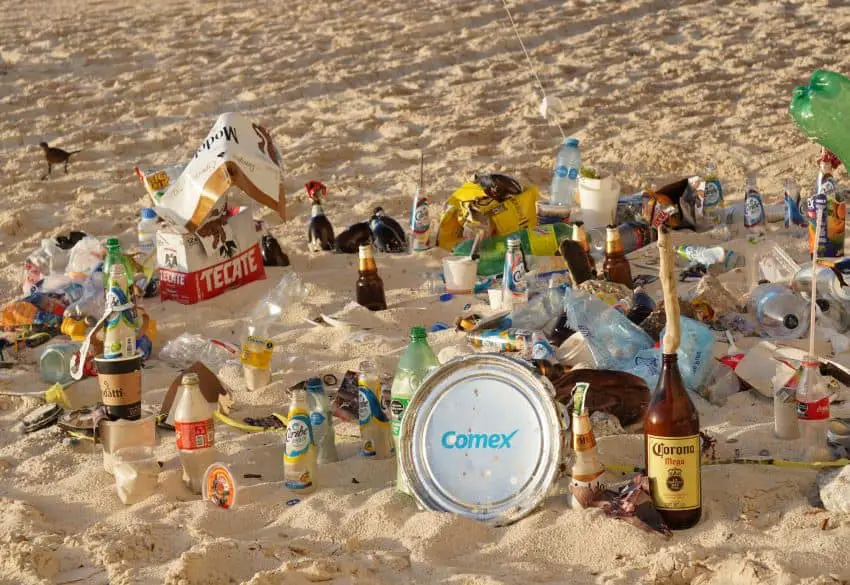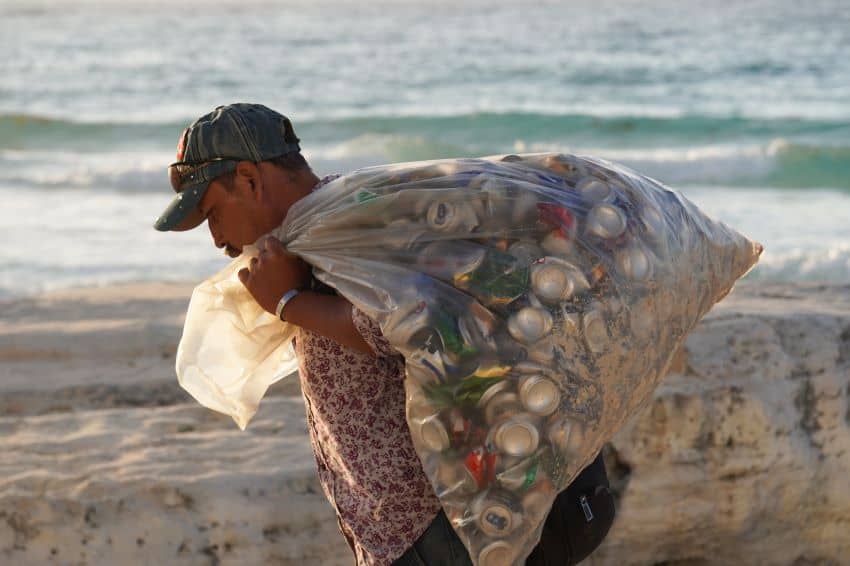Our small town, Chacala, recently experienced a trash crisis when trash pickup services were suspended for several weeks. The landfill that normally holds our trash has caught fire — the second time this year — and can’t hold any more trash until things are under control. Piles of rubbish piled up on every street corner. Rotten food, plastic bags and bottles, Styrofoam containers, dirty toilet paper, and other unnamed items were strewn everywhere.
The local government does not provide alternative plans for waste disposal, so people have to think of their own solutions. A number of Chacaleños rallied to pay for the garbage trucks carrying the trash, at a cost of tens of thousands of pesos.

This crisis got me thinking about how much trash is left on Mexico’s beaches, how trash dumping is handled (and mishandled), who is responsible, and how we can all do a better job of reducing trash, especially tourists.
Tourists often complain about the amount of rubbish on Mexican beaches and assume that local Mexican residents are primarily responsible for this. Not only is this a demeaning and harmful cultural stereotype, it is also far from the truth. Foreign tourists and visitors from outside the area contribute more waste than local residents, placing enormous pressure on communities to keep beaches clean with little or no government support.
Take Chacala for example, our population is around 500 people. But on certain weekends or holidays, we can see our population quadruple to 2,000 people or more. Mondays are the worst days to walk on the beach after everyone has left and the evidence is left behind – styrofoam plates, plastic cups and bottles, dirty diapers, plastic bags, cigarette butts – you name it. Even though many people use the rubbish bins provided, it turns out there is too much rubbish for them to accommodate.
And when trash cans overflow, community members and local business owners have to organize volunteers to clean up or pay someone to collect it, all at their own expense.

Instead of complaining about rubbish, here are some ideas for visitors to help keep beaches clean:
- Separate your waste: Most of the waste produced by society can be recycled or biodegradable. You can reduce the amount of waste that ends up in landfills by separating recyclables and food waste from other waste. Many beach towns have recyclable and organic collection containers or centers.
- Carrying reusable shopping bags: This has become commonplace in many parts of the world, but for some reason, when people go on holiday, they seem to forget. When you travel, bring your good habits and some reusable bags. Or buy some bags here. Mexico has one of the longest reusable market bag tradition in this world.
- Buy more whole foods: Fill these reusable bags with fresh fruit, vegetables, bread, tortillas and other items that can be purchased locally and not packaged in plastic packaging.
- Take a plate to the taco stand: No one can resist the temptation of street tacos, except you Can refused to be given a styrofoam plate to eat it from. Next time you’re craving tacos, leave no trace and bring a plate (and cloth napkins) with you.
- Order drinks packaged in returnable bottles: Skip drinks packaged in plastic bottles and opt for drinks packaged in returnable glass bottles or made fresh in bulk such as fresh waters served in glass glasses or clay mugs.
- Bring a take-out container to the restaurant: If your eyes are bigger than your stomach and you often have leftovers when you eat out, make sure to bring a reusable container to take home leftovers instead of having the restaurant put them in a styrofoam box.
- Support businesses that reduce waste: This is becoming more common in Mexico (and in several cities, it’s the law) not to use disposable plates, bags and other items in stores and restaurants, and choose natural and biodegradable products. (We have local ice cream shop in Chacala that uses coconut fiber as a bowl!) Look for and support businesses that are taking action to reduce waste.
- Put the trash in a can with a lid: Leaving trash in bags on the street will attract dogs to scatter it and leave a mess. Put trash in lidded cans, and if your hotel or rental doesn’t have one, be a champion and buy them some trash.
- Collecting trash while walking on the beach: Since you’ll most likely be walking on the beach, why not bring a trash bag and pick up rubbish along the way?
- Donate locally cleaning effort: The community you visit most likely has a neighborhood committee or cleaning campaign that seeks to educate the public and raise funds for waste removal, reduction and recycling efforts. Ask around and find groups in your community that you can support.
This obviously happens, but the companies that produce single-use products are the real cause of this world waste problemnot consumers. We are pressured to make better choices, and this certainly helps, but it is companies who must take responsibility for the lifecycle of their products. As a society, we must continue to support laws that hold companies accountable for the waste they produce, and as consumers, we must stop supporting companies that contribute to the problem.
Debbie Slobe is a writer and communications strategist living in Chacala, Nayarit. He blogs atMeexpatmama.comand is a senior program director atResource Media. Find him onInstagramAndFacebook.





